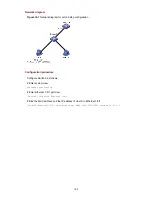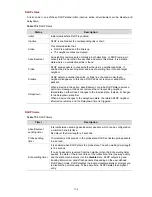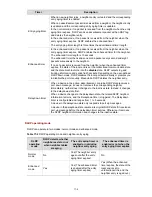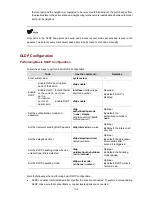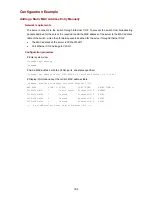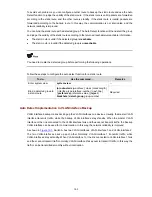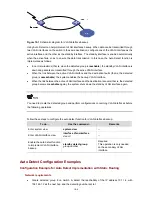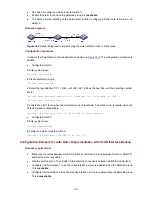
Generally, the majority of MAC address entries are created and maintained through MAC address
ning. The following describes the MAC address learning process of a switch:
As shown in
lear
1)
Figure 18-1
, User A and User B are both in VLAN 1. When User A communicates with
User B, the packet from User A needs to be transmitted to Ethernet 1/0/1. At this time, the switch
acket, that is, the address MAC-A of User A to the MAC
forming an entry shown in
Figure 18-2
records the source MAC address of the p
address table of the switch,
.
ng diagram (1)
Figure 18-1
MAC address learni
Figure 18-2
MAC address table entry of the switch (1)
After learning the MAC address of User A, the switch starts to forward the packet. Because there is
2)
User B in the existing MAC address table, the switch
xcept Ethernet 1/0/1 to ensure that User B can receive the packet.
ng diagram (2)
no MAC address and port information of
forwards the packet to all ports e
Figure 18-3
MAC address learni
Because the switch broadcasts the packet, both User B and User C can receive the packet.
However, User C is not the destination device of the packet, and therefore does not process the
packet. Normally, User B will respond to User A, as shown in
3)
Figure 18-4
. When the response
18-2


